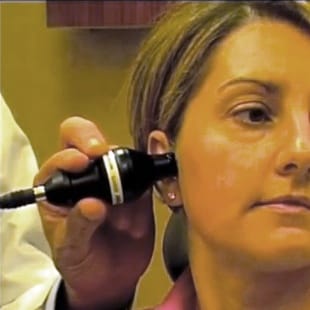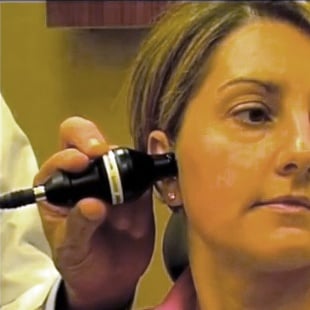
The Diagnostic Criteria for The Doppler
This excerpt from the April 2015 Dawson Faculty Office Hours with Drs. Leonard Hess and Rajeev Upadya answers a question on the diagnostic criteria for the doppler.
Question: Can you go over the diagnostic criteria for the doppler?
LH: Let’s talk about what we listen for with the doppler and how we go about that.
When you buy the doppler, it comes with a great training DVD. It’s really boring and took me about three tries to get through that DVD without falling asleep, but it was time well spent.
 When we start to use the doppler, one of the first thing we do is identify and place the head of the doppler in the correct location, which is in that little area right behind the distal area of the joint. We start listening for vascular sounds. If you remember in that distal joint space, we have the arterial venus plexis, the superficial temporal artery and temporal vein feeding into the distal joint space. We identify where we need to be by listening to the venus sounds and arterial sounds in the distal joint space.
When we start to use the doppler, one of the first thing we do is identify and place the head of the doppler in the correct location, which is in that little area right behind the distal area of the joint. We start listening for vascular sounds. If you remember in that distal joint space, we have the arterial venus plexis, the superficial temporal artery and temporal vein feeding into the distal joint space. We identify where we need to be by listening to the venus sounds and arterial sounds in the distal joint space.
Then we start to change the orientation of that doppler head to the anterior joint space. Once we start angling that, we hear the vascular sounds disappear. Then what we want to do is listen to the position of the joint. If we have the condyle and the disc is sitting on top of it, the condyle disc assembly is great and bathed in synovial fluid, in the first 20 mm of opening that’s all rotation of the condyle in the glenoid fossa. If that medial pole is in it’s proper position and bathed in synovial fluid, when the patient slowly opens and closes we shouldn’t hear anything. We should not hear any sounds at all. That is what we’re going to hear on a lot of our patients. What that means is the medial pole is in tact. We would do the same for both sides.
Next what was want to do is now have the patient go from rotation into translation (when we go into full opening). So now the center of force changes from our medial pole to our lateral pole. If our lateral pole is displaced anteriorly and as we go from rotation into translation, we are going to pick up the sounds of crepitus, grinding or even a staccato click or pop sound. If we’re hearing a grindy/crunchy sound as the patient opens and closes, then we have a good idea that the lateral pole is displaced anteriorly and it’s not reducing back into it’s proper place. You may have a patient where they go from rotation into translation and it goes grind, grind, grind then clicks as the disc recaptures or reduces back onto the head of the condyle. That’s what we’re listening for.
If we are not hearing sound, that’s good. We’re listening for the times we do hear sound (crepitus or grinding), which helps us determine the position of the disc, which is based on whether the patient is rotating or translating.
The great thing about the doppler is the patient can hear all of this. So what I do is explain to the patient exactly what we should hear and exactly what we shouldn’t hear. Guess what? When they hear what they shouldn’t hear, they get concerned pretty fast. They want to know what we do about it. And when you get the patient to ask, “What do we do about it?” they’re in a good place because they’re looking for a solution for what they are hearing.









Leave a Reply
Want to join the discussion?Feel free to contribute!